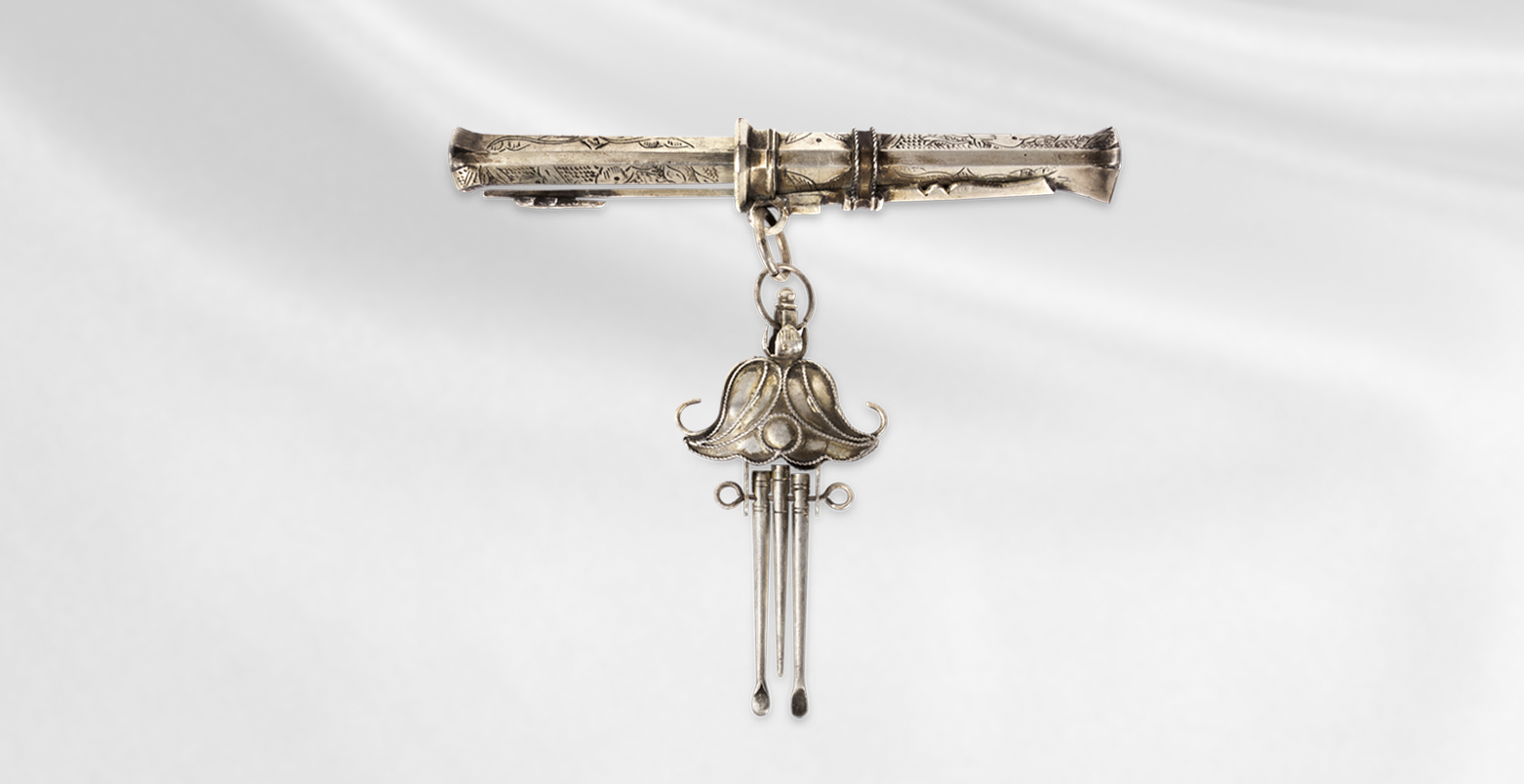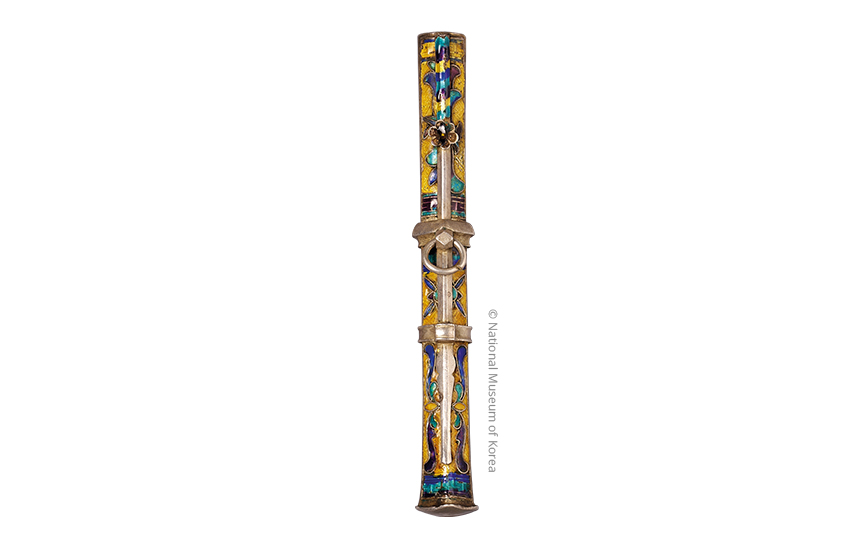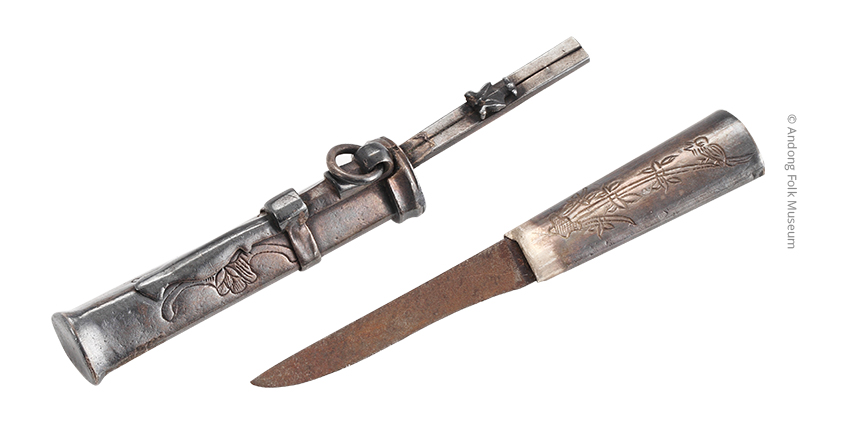
Contents










Crafts · Written by Lee Eun-yi, designer & writer
Eunjangdo
Symbol of Unwavering Fidelity
In historical dramas and movies that depict traditional Korean culture, a woman in danger is often
shown pulling out an eunjangdo, a silver ornamental knife, to protect herself. The small knife symbolized
the fidelity of women and the loyalty of men. Though this implement has almost disappeared, it
remains a valuable cultural asset made only by a handful of masters today.

Exquisite craftsmanship and ornaments make the nickel-based eunjangdo more attractive. © Ganghwa History Museum
Jangdo is the general term for a small ornamental knife with a sheath carried in clothing. A knife worn on the waist or hung by a coat string is called a paedo and a nangdo when carried in a pocket. The origin of the custom of carrying a jangdo is subject to debate. Some believe that the custom evolved from the Mongols after the Goryeo Dynasty was conquered by China’s Yuan Dynasty, while others say it is indigenous to Korea and continued from the Three Kingdoms era to the time of enlightenment. At the Tomb of Baekje King Muryeong, gold and silver ornamental knives and eunjangdo were excavated while ringed and ornamental knives were unearthed at the ancient tombs of the Silla Kingdom. A record from the Goryeo era saying wearing a dagger was prohibited also claimed that the carrying of a jangdo existed as a custom on the Korean Peninsula from a long time ago.
Dramas and movies show that the knife was the exclusive property of women, but it was also a necessity for both sexes. Jangdo was utilized both indoors and outdoors for such uses as cutting paper, carving a top, trimming twigs or using for self-defense. As the knife grew more prevalent during the Joseon Dynasty and its decorative nature and symbolism were emphasized as well as its practicality, a woman about to get married received a jangdo from her parents so that she could fulfill her proper role in married life; a man also got the knife from his parents upon reaching adulthood so that he could be loyal to the country and fulfill his duty to his friends. The word ilpyeondansim (unwavering devotion) engraved on every jangdo clearly expresses what the knife symbolizes.

A pure silver jangdo is topped with beautiful ornaments.
Protecting Body and Soul
Jangdo is as short as the palm of an adult’s hand. It was manufactured in various forms such as in the shape of a cylinder or the character eul, a rectangle and an octagon and made of wood, gold, silver, bronze, metal, bones and jewels such as jade. Other jangdo added a touch of practicality with attached silver chopsticks, ear swabs and fruit-shaped pegs. The strength of the blade is determined by the temperature and speed at which the blade is tempered, and professional techniques are needed to improve the degree of completeness as the blade breaks if too strong and bends if too weak. Patterns like the ten symbols of longevity, bats, dragons, butterflies, the Four Gracious Plants and pine trees were engraved on jangdo sheaths to pray for blessings and symbolize fidelity.
The greatest type of jangdo is undoubtedly Byeongyeong eunjangdo, or a type of knife manufactured in Ulsan’s Byeongyeong region, which used to be a military city during the Joseon period. The odong inlay technique, considered the greatest of its kind, uses an intaglio technique to carve patterns on odong, an alloy of gold and copper, and then fuses silver. The craftsmanship boasted such high quality that it was an integral part of trading with China. For these reasons, an eunjangdo, which is made after being beaten thousands of times in a fire of over 1,000 ℃ and undergoing more than 100 processes, contains the soul of the master who makes it. Though no longer used for self-defense, the knife remains a relic of Korea’s rich traditions and past.

Hailing from the Joseon Dynasty, the eunjangdo is relatively small at 11.3-cm long.
Other Articles















